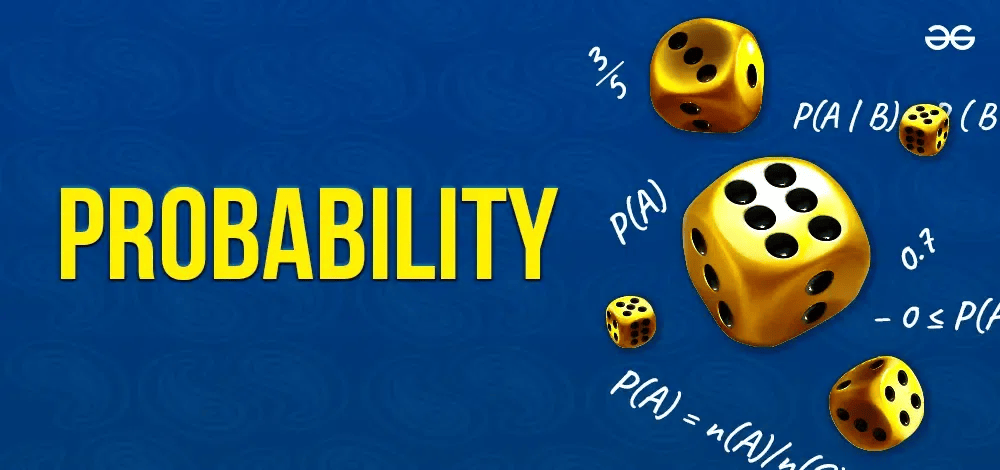
Basics of probability

A probability is a number that reflects the chance or likelihood that a particular event will occur. Probabilities can be expressed as proportions that range from 0 to 1. A probability of 0 indicates that there is no chance that a particular event will occur, whereas a probability of 1 indicates that an event is certain to occur.
Probability of an Event:
$$ P(A) = \frac {n(E)}{n(S)} $$
Where,
n(E) = Number of favorable outcomes
n(S) = Total number of possible outcomes
Example:
Probability of obtaining an odd number on rolling dice for once.
Solution:
Sample Space = {1, 2, 3, 4, 5, 6}
n(S) = 6
Favorable outcomes = {1, 3, 5}
n(E) = 3
Using the probability formula,
$$ P(A) = \frac {n(E)}{n(S)} $$
$$ \text{P(Getting an odd number)} = \frac 36 $$
$$ = \frac 12 = 0.5 $$
Probability Range:
$$ 0 \le P(A) \le 1 $$
Rule of Complementary Events:
$$ P(A’) = 1- P(A) $$
Example:
Find the probability that a leap year has 52 Sundays.
Solution:
A leap year can have 52 Sundays or 53 Sundays.
In a leap year, there are 366 days out of which there are 52 complete weeks & remaining 2 days.
Now, these two days can be (Sat, Sun), (Sun, Mon), (Mon, Tue), (Tue, Wed), (Wed, Thu), (Thu, Fri), (Fri, Sat).
So there are total 7 cases out of which (Sat, Sun) (Sun, Mon) are two favourable cases.
So, P (53 Sundays) \( = \frac 27 \)
So, P (52 Sundays) = 1 – P(53 Sundays)
\( = 1 – \frac 27 \)
\(= \frac 57 \)
Rule of Addition:
$$ P(A\cup B) = P(A) + P(B) - P(A\cap B) $$
Disjoint Events
Events A and B are disjoint if
$$ P(A\cap B) = 0 $$
Independent Events:
$$ P(A) = P(A|B) $$
$$ P(B) = P(B|A) $$
$$ P(A\cup B) = P(A) + P(B) $$
$$ P(A\cap B) = P(A) \cdot P(B) $$
Example:
A single fair die is rolled. Let A={3} and B={1,3,5} Are A and B independent?
Solution:
In this example we can compute all three probabilities
\( P(A)= \frac 16 \)
\( P(B)= \frac 12 \)
\( P(A\cap B)=P({3})= \frac 16 \)
\( P(A)\cdot P(B)=(\frac 16)(\frac 12)=\frac {1}{12} \)
\( P(A\cap B) \neq P(A) \cdot P(B) \)
So,the events A and B are not independent
Conditional Probability:
$$ P(A | B) = P(A\cap B) / P(B) $$
Bayes Formula:
$$ P(A | B) = \frac {P(B | A) \cdot P(A)}{P(B)} $$


